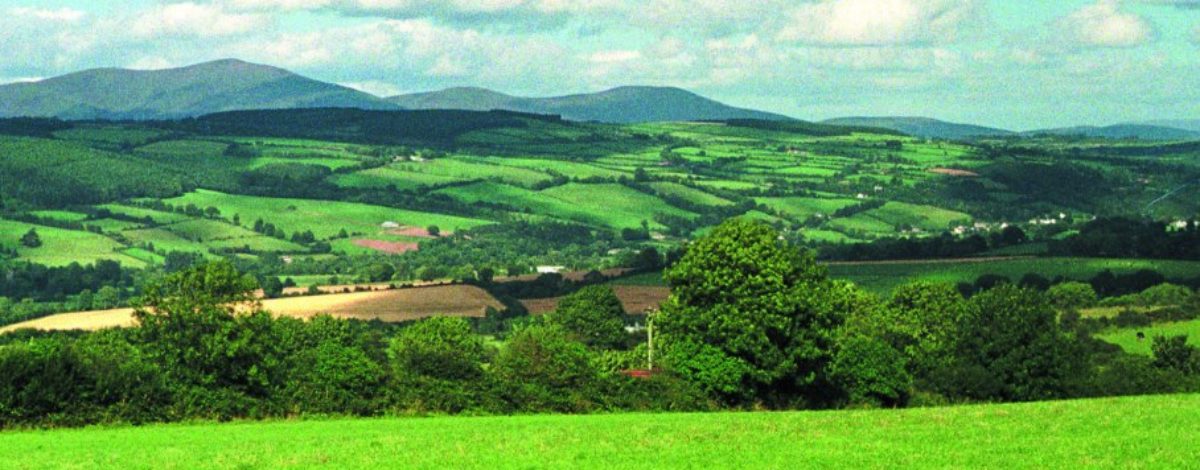Some people couldn’t give a flying fig for old things. Old photos, old furniture, old books.
Even old friends.
I have no quarrel with that attitude. Even if it’s your house, knock it down, sooner the better and get that new one up. Money talks, B.S. walks. I know that.
In fact, I have come to believe over the years that a person can be too sentimental, to the point of wallowing in the past. Then, what came before begins to turn on you and becomes the enemy of what lies ahead.

But I am grateful, nevertheless, that in some parts of the world, people are not so eager to “fire up the bulldozers” and bring old walls crashing down. Because if those people were not around, many members of my family and I would not have been able to have had the following experience.
My ancestors came from Ireland in stages beginning during the Famine in 1845 and ending, as far as I know, with the last group who came to New York in 1852. It was not an easy trip over. Two children died on the ship and were buried at sea.
Being farmers in the old country, my ancestors took up the same occupation here. And they prospered and lived well.
When I was a boy, I became very curious about all this, after hearing my father talk about our origins. The Emerald Isle. Erin. The Old Sod. The Viking raids. St. Patrick and the snakes. Leprechauns.
Pretty exotic stuff.
I wanted to know where exactly we had come from in Ireland but there was very little information to be had. Not much had been passed down, for some reason. Either the first immigrants here didn’t want to talk about the past or they were too busy to do so. Either way, a lot of the details of our history were lost.
Basically, all we seemed to know were the names of my great-great-grandparents and their eight kids. And the fact that they were farmers from County Cork in the south of Ireland. The name of a village called Conna might have been floating around back then in family lore; I can’t remember.
All I know is that by 1985, the obsession to find the farm in Ireland where the Hegartys had once lived and worked the land had grown to a fever. My sister and I travelled there for three weeks and talked to a lot of priests, scraped ivy off a lot of tombstones. She fell into a deep hole in one graveyard; I discovered the painful wonders of stinging nettle.
What we didn’t turn up were any ancestors. But other family members kept up the search and by 1994, we were hot on the trail. During a visit that year, my wife and I met a geographic historian who was of immense help as was an archivist in Cork City.
Consequently, on a warm, sunny evening in August 1994, my wife and I and our adopted historian friend got out of our rented car and climbed up onto a steel gate on a back road near Conna.
“There is the Hegarty farm,” said our Irish friend.
I felt as though I was in a bit of a dreamworld. Equivalent, perhaps, to an astronaut finally standing on the moon, a hockey player carrying the Stanley Cup around the rink, a mom holding her newborn babe.
Not very impressive to you, maybe, but for some reason, darned important to me.
Twenty-six acres of beautiful green rolling hills. Forty shades of green. Just like in Johnny Cash’s song.
We drove up to the modern house at the top of the property near the road. Our historian went to the door and talked to the woman who lived there. She looked at his maps and records and agreed that our family had once lived there. She came out to our car and met us. And then invited us to take a walk with her, down a lane.
“Come with me and I’ll show you the place,” she said.
“What do you mean ‘the place’?” I asked, though I was almost afraid to.
“Oh, the house. The house they used to live in. It’s down at the end of this lane.”
A few hundred yards we walked downhill, high brush on both sides of us, till we rounded a turn and caught sight of a typical old Irish stone farmhouse of a couple hundred years ago and longer. Next to it was a tiny stone barn.
I could hardly believe what I was seeing. I never expected to get this far.
When I unfastened the twine which let me open the door of the cottage, I was the first Hegarty to see inside that house in 142 years. My great-great-grandfather John was probably the last to look inside before he and his family rode their pony cart up the hill and off to Cobh harbour for the trip to North America, carrying with them four sons, a daughter and her husband and two grandchildren which they couldn’t know at that time wouldn’t make the trip safely.
After our family left, neighbours who were tenants in a smaller cottage farther down the hill moved in, probably the same day. They were a family of Morriseys, ironic as that name is a derivate of Morrison, my mother’s maiden name.
The Hegarty home was occupied till the 1970s, by the family who now lives at the top of the hill.
Over all those decades it stood. It was standing when Canada was born and when Abe Lincoln died, when TV was invented and two world wars were fought. When humans put a spacecraft on Mars. It still stands today.
I’m glad no one ever knocked it down.
©2005 Jim Hagarty






